Let's say that you have a plist file like this:

and this code:
@implementation ViewController
NSDictionary *dictionary;
- (void)viewDidLoad
{
[super viewDidLoad];
// Do any additional setup after loading the view, typically from a nib.
NSMutableArray *array=[[NSMutableArray alloc]init];
array=[NSMutableArray arrayWithContentsOfFile:[[self applicationDocumentsDirectory] stringByAppendingPathComponent:@"root.plist"]];
dictionary = [array objectAtIndex:0];
}
- (NSString *)applicationDocumentsDirectory {
NSArray *paths = NSSearchPathForDirectoriesInDomains(NSDocumentDirectory, NSUserDomainMask, YES);
NSString *basePath = ([paths count] > 0) ? [paths objectAtIndex:0] : nil;
return basePath;
}
-(NSInteger)numberOfSectionsInTableView:(UITableView *)tableView {
NSLog(@"numberOfSectionsInTableView:%lu",(unsigned long)dictionary.count);
return dictionary.count;
}
-(NSString *)tableView:(UITableView *)tableView titleForHeaderInSection:(NSInteger)section {
return [[[dictionary allKeys] objectAtIndex:section] capitalizedString];
}
-(UITableViewCell *)tableView:(UITableView *)tableView cellForRowAtIndexPath:(NSIndexPath *)indexPath {
static NSString *cellIdentifier = @"cell";
UITableViewCell *cell = [tableView dequeueReusableCellWithIdentifier:cellIdentifier];
NSArray *peopleArray = [dictionary objectForKey:[[dictionary allKeys] objectAtIndex:indexPath.section]];
cell.textLabel.text = [[peopleArray objectAtIndex:indexPath.row]objectForKey:@"name"];
cell.detailTextLabel.text = [NSString stringWithFormat:@"Color:%@ - Gender:%@",[[peopleArray objectAtIndex:indexPath.row]objectForKey:@"favorite color"],[[peopleArray objectAtIndex:indexPath.row]objectForKey:@"gender"]];
return cell;
}
-(NSInteger)tableView:(UITableView *)tableView numberOfRowsInSection:(NSInteger)section {
NSString *key =[[dictionary allKeys] objectAtIndex:section];
NSLog(@"numberOfRowsInSection:%lu",(unsigned long)[[dictionary objectForKey:key] count]);
return [[dictionary objectForKey:key] count];
}
it will give you this output:
(Supposed you have a tableView set up with Delegate and DataSource)

I know that you asked for having the "Friends" and "Enemies" in different TableViews, but I use both in the same tableView but in different sections. But my code can get you started.
If you need extra help about the UITableView, see Apple UITableView Class Reference
If this is necessary, I used this code to generate the example plist-file in my test-project:
NSMutableArray *root=[[NSMutableArray alloc]init];
NSMutableArray *friendsarray = [[NSMutableArray alloc]init];
NSMutableDictionary *dict = [[NSMutableDictionary alloc]init];
[dict setObject:@"Jill" forKey:@"name"];
[dict setObject:@"green" forKey:@"favorite color"];
[dict setObject:@"female" forKey:@"gender"];
[friendsarray addObject:dict];
NSMutableDictionary *dict2 = [[NSMutableDictionary alloc]init];
[dict2 setObject:@"Bob" forKey:@"name"];
[dict2 setObject:@"Blue" forKey:@"favorite color"];
[dict2 setObject:@"male" forKey:@"gender"];
[friendsarray addObject:dict2];
NSMutableArray *enemiesarray = [[NSMutableArray alloc]init];
NSMutableDictionary *dict3 = [[NSMutableDictionary alloc]init];
[dict3 setObject:@"Michael" forKey:@"name"];
[dict3 setObject:@"Red" forKey:@"favorite color"];
[dict3 setObject:@"male" forKey:@"gender"];
[enemiesarray addObject:dict3];
NSMutableDictionary *d = [[NSMutableDictionary alloc]init];
[d setObject:friendsarray forKey:@"friends"];
[d setObject:enemiesarray forKey:@"enemies"];
[root addObject:d];
[root writeToFile:[[self applicationDocumentsDirectory] stringByAppendingPathComponent:@"root.plist"] atomically:YES];


